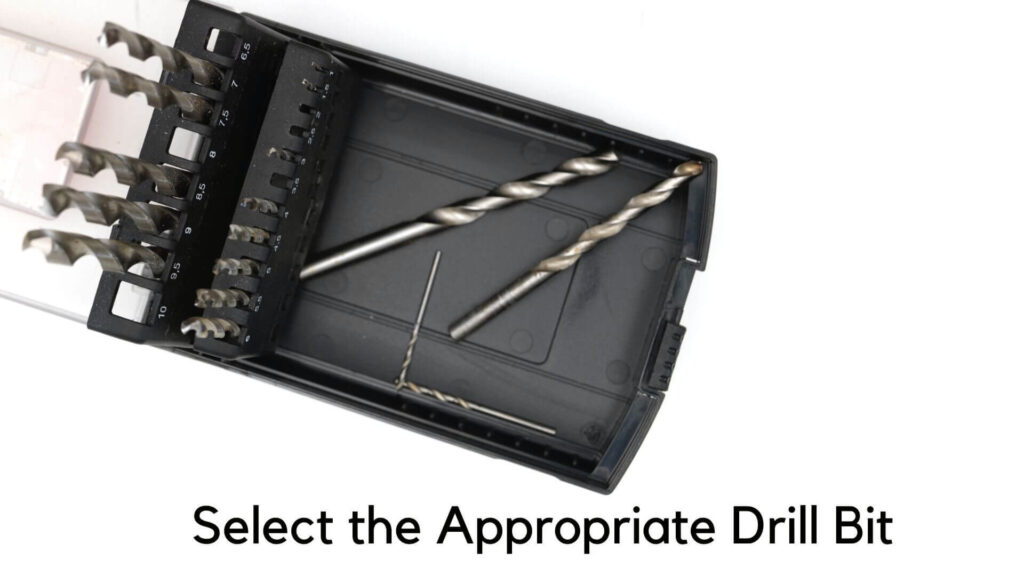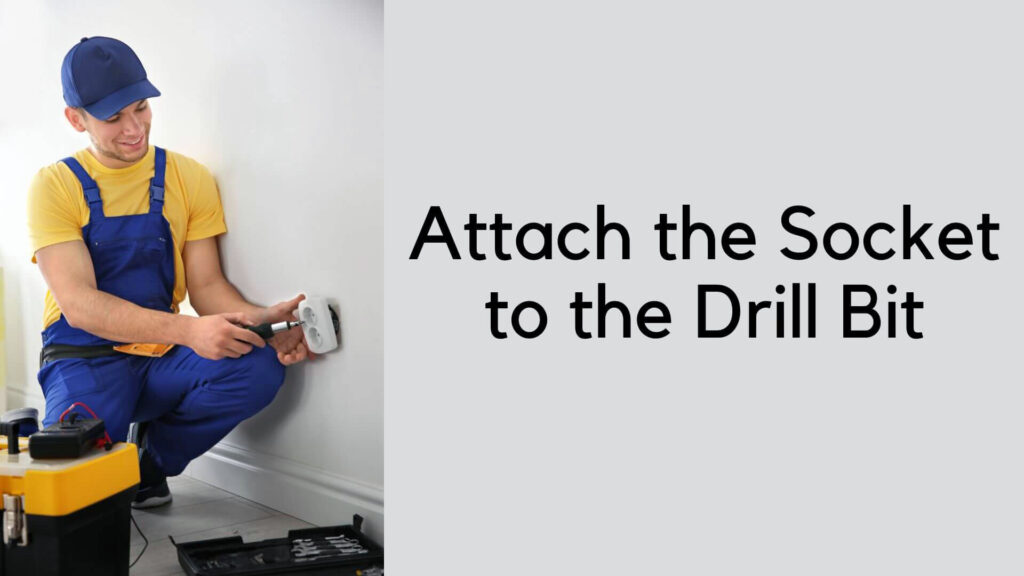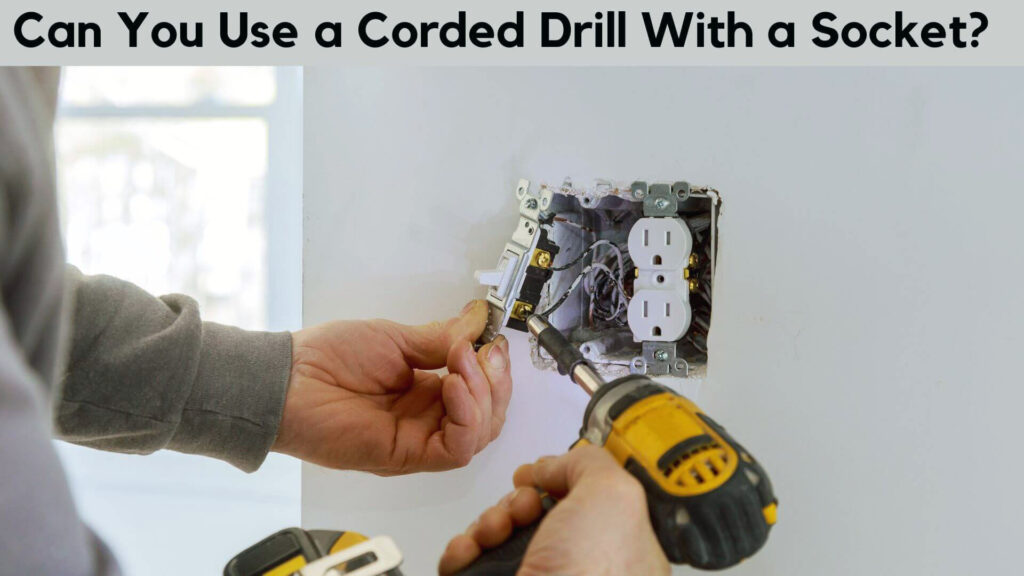Do you have an aversion to using a corded drill? If so, this might be the perfect article for you!
Corded drills are becoming increasingly popular as they offer many advantages over their corded counterparts. One of the main advantages is that corded drills can be used with sockets. This means you can easily use them to drill holes into bricks, concrete, or other materials.
A corded drill is a good option for many tasks because it has a built-in socket. Socketed drills allow you to drill into materials with the same precision and accuracy as if you were using a traditional drill.
Table of Contents
What is The Corded Drill With A Socket?
A corded drill with a socket is a type of drill that has an extra-long power cord. This makes it easy to use while standing or working at a standing height. The socket on the drill allows you to use special attachments, such as drills and screwdrivers, easily.
What are Some Uses for The Corded Drill With A Socket?
The corded drill with a socket can be used for various applications. It is an incredibly versatile tool that can help you complete various tasks. It is ideal for drilling into wood, metal, and masonry.
It can also be used to drive screws, bolts, and nuts into surfaces. With the addition of a socket, you can use the drill to loosen and tighten bolts and nuts. This makes it an ideal tool for home improvement projects like furniture assembly and appliance installation.
How Do I Use The Corded Drill With A Socket?
Step 1: Select the Appropriate Drill Bit.

When using a corded drill with a socket, selecting an appropriate drill bit that fits in the socket is essential. The drill bit should be the same size as the socket, as using a drill bit that is too large may damage the socket, and too small may not be able to penetrate the material. If unsure, consult a professional or refer to the manufacturer’s instructions.
Step 2: Attach the Socket to the Drill Bit

Attaching a socket to a drillbit is a simple process requiring a corded drill. First, ensure that the socket is the right size for the drill bit.
Once the size is confirmed, the socket can be easily attached by inserting it into the chuck of the drill and tightening it with a key. Make sure to tighten it securely so that it does not slip off during operation.
With the socket properly attached, the corded drill can now be used with the socket and applied to various tasks.
Step 3: Put the Socket on the Bolt or Nut You Want to Drill.
When using a corded drill with a socket, the first step is to attach the socket to the bolt or nut that you want to drill.
To do this, line up the socket’s square drive with the drill bit’s square drive, then twist the socket onto the bolt or nut until it is firmly in place.
It may be necessary to use a wrench or other tool to make sure that the socket is securely attached before you start drilling. Once it is in place, you can begin drilling.
Step 4: Set the Speed of the Drill

Once you have chosen the appropriate drill bit for the task at hand, the next step is to set the speed of the corded drill. This is important to ensure that you use the correct speed for the job, as too high of a speed could damage your workpiece, while too low of a speed could make the drilling process take longer than necessary.
To set the speed on your corded drill, use the sliding switch located on the side of the drill. Slide it up to increase the speed and down to decrease it. Once you have reached your desired speed, you are ready to begin drilling.
Step 5: Push and Pull the Trigger to Start Drilling.
When using a corded drill with a socket, it is important to remember to push and pull the trigger to start drilling.
This will cause the drill bit to spin, allowing the user to create holes in whatever material they are working with.
Following safety precautions when using any power tool is important as ensuring all connections are secure before beginning work.
Step 6: Stop Drilling When You Reach Desired Depth
Using a corded drill with a socket is a great way to quickly and easily complete tasks such as drilling holes into wood, metal, and plastic.
When using a corded drill, it is important to remember always to stop drilling when you reach the desired depth to avoid damaging the material or the drill bit itself. This will ensure that your project is completed safely and accurately.
Step 7: Remove the Socket from Drill Bit and Disengage the Trigger.
First, remove a socket from a corded drill, and ensure the drill is off and unplugged. Then, use the chuck key that came with the drill to loosen the chuck jaws and remove the socket from the drill bit.
Finally, disengage the trigger so that it no longer moves forward or backward. This will ensure that the drill will start smoothly while you are working on it.
Check Also: The 7 Best Corded Hammer Drill For Your Home Improvement!
What is The Top 10 Corded Drill with Sockets That You Can Use?
The top 10 corded drills with sockets that you can use are:
- The Dewalt DCD602KX,
- The Bosch PS31-2,
- The Black & Decker BDCD7200L,
- The Milwaukee M18 Fuel 18-volt Drill/Driver,
- The Makita XB902D5,
- The DeWalt DCD771K,
- The Makita XR902D2,
- The Milwaukee M12 Fuel 12-volt Drill/Driver,
- The DeWalt DCD771KX,
- The Bosch PS31-3.
What are the Top 10 Corded Drills Specifications With Sockets You Can Use?
The top 10 corded drills with sockets that you can use have the following specifications:
- The Dewalt DCD602KX has a max speed of 2,500RPM and a max torque of 1,500Nm.
- The Bosch PS31-2 has a max speed of 2,000RPM and a max torque of 1,000Nm.
- The Black & Decker BDCD7200L has a max speed of 1,800RPM and a max torque of 1,200Nm.
- The Milwaukee M18 Fuel 18-volt Drill/Driver has a max speed of 1,500RPM and a max torque of 1,000Nm.
- The Makita XB902D5 has a max speed of 1,200RPM and a max torque of 800Nm.
- The Makita XR902D2 has a max speed of 800RPM and a max torque of 600Nm.
- The Milwaukee M12 Fuel 12-volt Drill/Driver has a max speed of 1,000RPM and a max torque of 500Nm.
- The DeWalt DCD771K has a max speed of 1,000RPM and a max torque of 400Nm.
- The DeWalt DCD771KX has a max speed of 1,500RPM and a max torque of 600Nm.
- The Bosch PS31-3 has a max speed of 500RPM and a max torque of 300Nm.
What Are The Features Of The Top 10 Corded Drills With Sockets That You Can Use?
The features of the top 10 corded drills with sockets that you can use are as follows:
- The Dewalt DCD602KX has a LED light that lets you see in the dark.
- The Bosch PS31-2 has a rubber grip that provides a comfortable grip.
- The Black & Decker BDCD7200L has a reverse mode.
- The Milwaukee M18 Fuel 18-volt Drill/Driver has an impact-resistant case.
- The Makita XB902D5 has a built-in battery level indicator.
- The Makita XR902D2 has a 2-speed orbital power.
- The Milwaukee M12 Fuel 12-volt Drill/Driver has a 2-speed orbital power.
- The DeWalt DCD771K has a keyless chuck.
- The DeWalt DCD771KX has a keyless chuck.
- The Bosch PS31-3 has a 1/2-inch chuck.
What are The Benefits of The Corded Drill With Socket?
1: Longer power cord allows for greater mobility and range of movement.
2: More powerful motor provides higher torque and more speed options.
3: Socket adapters allow for more versatility when working on different materials.
4: Variable speed allows for more precise drilling and driving.
5: Reversible switch makes it easier to remove screws or drill into tight spaces.
6: Easier to handle as the corded drill with socket is lightweight.
7: Cost-effective since it can be used on multiple projects without buying new parts.
What are The Disadvantages of The Corded Drill With Socket?
1: Limited Mobility:
Corded drills are not as mobile as cordless drills due to the constraint of the cord.
2: Prone to Tangling:
The cord can easily get tangled and caught on objects, making it difficult to maneuver.
3: Electrical Hazards:
If the cord is damaged, it can be a shock hazard for the user.
4: Limited Reach:
The cord’s length limits the user’s reach, which could be inconvenient in certain situations.
5: Low Power Output:
Corded drills typically have less power than their cordless counterparts.
Check Also: 8 Best Corded Drill For Woodworking – Reviews & Buyers Guide
FAQS About Can You Use a Corded Drill With a Socket?
What are the best types of drill sockets for a corded drill?
The best type of drill sockets for a corded drill will depend on the size and type of screws or bolts you are working with.
Generally, it is best to use a combination of Hex, Torx, and Phillips drill sockets. These will give you the most versatility and will allow you to work with the widest range of screws and bolts.
What is the best way to use a corded drill with a socket?
The best way to use a corded drill with a socket is to ensure that the socket is firmly secured to the drill’s chuck and that the drill bit is properly inserted into the socket.
When screwing or unscrewing, it is important to ensure that the drill is set to the correct speed and that it is held steady and level.
It is also important to ensure that the drill bit is not too loose or tight, as this can cause damage to the socket or the screw or bolt.
Finally, it is important to use the appropriate safety precautions, such as wearing safety glasses and gloves.
How do I know if the drill is compatible with my socket?
When selecting a corded drill, it is important first to check that it is compatible with the socket.
Generally, the drill should be the same size as the socket and have a compatible chuck. Additionally, it is important to ensure that the drill has a speed setting that is suitable for the socket.
What bits should I use with a corded drill?
The type of bit that you should use with a corded drill will depend on the type of screws or bolts you are working with.
Generally, it is best to use a combination of Hex, Torx, and Phillips drill bits. These will give you the most versatility and will allow you to work with the widest range of screws and bolts.
It is also important to ensure that the bit is the correct size for the screw or bolt you are using.
Can I use a corded drill with a handheld drill?
Yes, you can use a corded drill with a handheld drill. However, it is important to ensure that the drill is compatible with the socket and that the drill bit is the correct size and type for the job.
It is also important to ensure that the drill is set to the correct speed and that it is held steady and level. Additionally, it is important to use the appropriate safety precautions, such as wearing safety glasses and gloves.
Last Word
A corded drill with a socket is a powerful tool that can help you with various tasks. Follow these simple steps to get started using this powerful tool.

Hey, I am Shihab Uddin, I’m a huge fan of DIY crafts. My workshop is where I spend most of my spare time, and I’m always working on some project. To that end, I’d like to share some of my knowledge and experience with you in power tools, woodworking, and other specialized materials fabrication.
I will guide you with genuine knowledge that can assist you with deciding whether a drill is appropriate according to your requirements or not. If you want to find the best drill and know which type of drill is most suited for your needs, then I can guide you with my expertise. My passion lies in helping others find the correct products they need at an affordable price.


